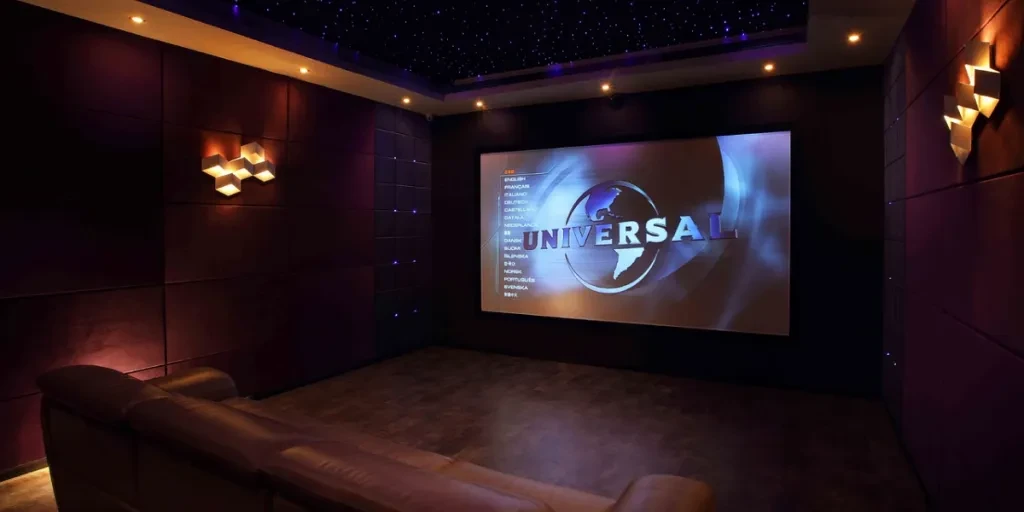With the proliferation of smartphones and tablets, it seems incredible to find anyone who has not watched any movies or dramas on these personal gadgets. The worldwide video streaming market data can probably shed some light on the penetration rate of such digital viewing experiences: a market size expected to hit US$ 137.7 billion by 2027, with a compound annual growth rate (CAGR) of 8.27% from 2024 to 2027. This surpasses the forecast for the global cinema market, which is anticipated to grow at a CAGR of 5.14% and reach approximately US$ 109.4 billion by 2029.
All these data not only indicate the thriving worldwide movie market but also signify the overall growing trends of moviegoers’ preferences, which show a tendency to watch movies outside of theater settings. While smartphones and tablets may make up for their relatively small screens with their conveniences and portability, the advantages of home entertaining systems like projectors and TVs remain significant. As a result, one may be wondering what exactly are the differences between these two options, and which market to focus on as a retailer?
Read on to explore the overall market outlook for both projectors and TVs, their key differences from a seller’s point of view, as well as their respective popularity in 2025.
Table of Contents
Projectors vs. TVs: Product and market overview
● Understanding projectors and TVs
● Home entertainment market overview
Key differences that retailers should be aware of
● Quality and performance
● Cost and value
● Installation and usage flexibility
● Target market segmentation
Projectors vs. TVs: Which is more popular?
Illuminating the right choice
Projectors vs. TVs: Product and market overview
Understanding projectors and TVs
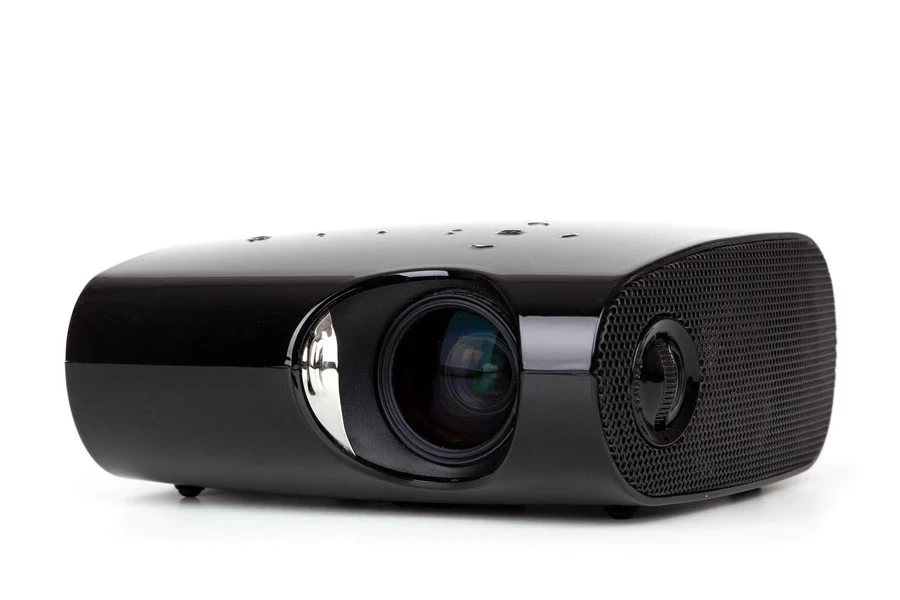
Since TVs are a familiar feature in many homes, let’s first take a closer look at projectors. A projector is a device that displays pictures or videos on a flat surface, usually a wall or a screen. It is basically an optical device that functions by receiving a visual signal and projecting the image using different light sources, such as from a lamp, LED, or laser through different display technologies.
The most widely used display technology options in projectors are LCD panels and DLP chips. For LCD projectors, it works when a light source shines through LCD panels to create the image, while in DLP projectors, the light is reflected off micro-mirrors on a chip to modulate it. Another display technology, LCoS (Liquid Crystal on Silicon), combines elements of both LCD and DLP by using liquid crystals on a reflective silicon surface, producing a smoother and highly detailed image.
The type of projector is also differentiated by the distance needed to project a clear image of a certain size. There are three main types of throw distances: standard throw, which needs a longer distance to project a large image; short throw, which can produce a large image from a closer range; and ultra-short throw (UST) projectors, which can be positioned just a few inches from the screen—great for small spaces and easier installation.
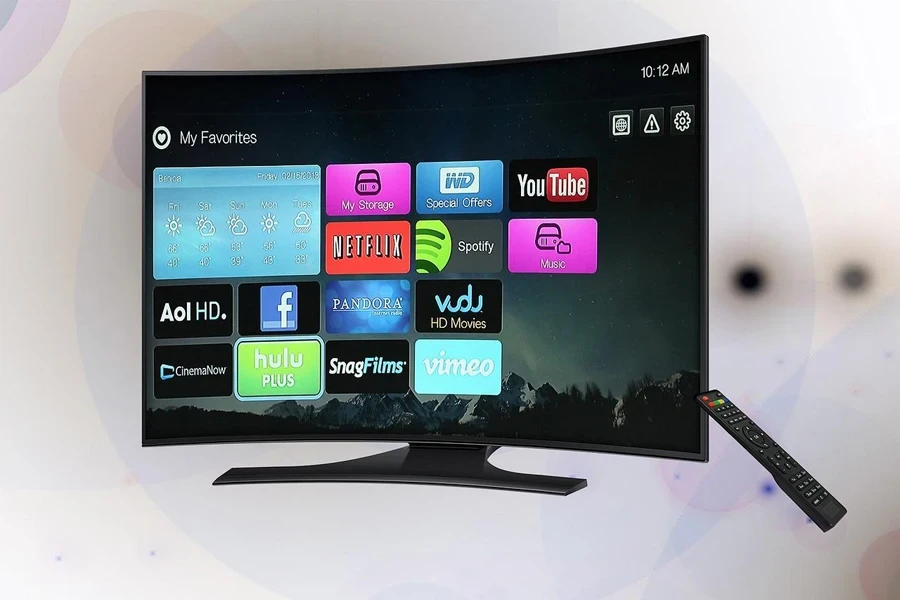
Similarly, a television (TV) is also an electronic display device that receives signals from various sources, such as cable, satellite, or streaming services, and converts them into visual and audio outputs. Depending on the technology, modern TVs can vary in picture quality, energy efficiency, and design.
Overall, TVs can be classified based on display technology hierarchy such as LCD, LED, OLED, and QLED, or in resolution such as HD, 4K, or 8K as well as different physical shapes like flat screens or curved TVs. Additionally, there are also TVs with additional features including smart capabilities and gaming TVs with high refresh rates. Each of them serves distinct viewing needs, such as enhanced colors for those with OLED or QLED or smart functionalities for internet streaming capabilities.
Home entertainment market overview

While both projectors and TVs are extensively utilized across various fields, from the education sector to corporate and business fields as well as the broader consumer electronics market space, they are widely recognized as integral components of home entertainment or home theater systems globally.
The global home theater system market is set for a strong growth trajectory, whether in a short-term 5-year forecast or a longer 10-year projection. For instance, the home theater market is projected to increase by US$ 8.6 billion from 2023 to 2028, with a robust CAGR of 9.08%. Similarly, a separate forecast predicts an even more impressive double-digit CAGR of 15.8% for the global home theater system market between 2022 and 2031, surging to US$ 79.71 billion in 2031 from US$ 21.24 billion in 2022.
The increasing adoption of smart home technologies, alongside growing disposable incomes and product bundling strategies, are credited as the key factors that drive the home entertainment market’s rapid growth. Among home entertainment systems, projectors and TVs play particularly crucial roles in fulfilling consumer demands for immersive and enhanced viewing experiences.
Key differences that retailers should be aware of

While users may have varying perspectives when choosing between projectors and TVs, sellers should evaluate the options from the following four key aspects:
Quality and performance
Quality and performance are among the most critical factors in deciding between projectors and TVs, as they have a direct, significant impact on consumer satisfaction and experience.
From a visual standpoint, image resolution is one of the primary benchmarks to consider. To gauge this, pixel count is the widely accepted industry standard for both TVs and projectors, as resolutions for both essentially refer to the number of pixels—tiny dots of color that form the image on the screen. Since higher pixel counts result in sharper images, it’s no surprise that consumers increasingly seek a minimum of 4K UHD (ultra-high definition) resolution. With almost every modern TV now equipped with a default resolution of 3840×2160 pixels (commonly known as 4K UHD), the image quality of 4K UHD TVs is undeniably sharp and clear.
Conversely, the most common resolution for projectors today remains Full HD 1080p, rather than 4K UHD. Although 4K UHD projectors are fairly common too nowadays, they tend to come at a significantly higher price tag and are typically marketed for more high-end or dedicated home theater setups. It’s worth noting that however, unlike TVs, which have a fixed physical screen size and corresponding fixed resolution, the perceived sharpness of a projector’s resolution may vary based on projection size despite its fixed resolution, as larger screens spread the pixels across a wider surface, diluting clarity.
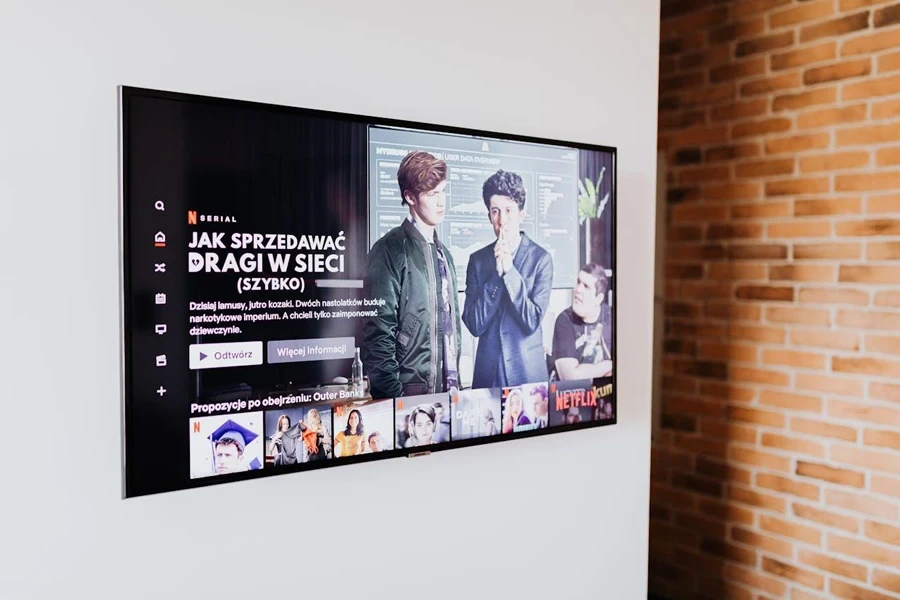
Additionally, advanced display technologies like OLED TVs and LCoS projectors can further enhance image quality. Nevertheless, projectors and TVs differ fundamentally in how they produce images. TVs have built-in light sources and self-contained displays, whereas projectors rely on external screens and controlled ambient light. Hence, external factors to projectors, such as screen size and projection distance can also affect the performance of projectors. It’s therefore harder for them to match the image clarity and brightness of TVs, even with enhanced display technologies.
Finally, in terms of sound quality, TVs clearly outshine projectors as they are often equipped with superior built-in audio systems, such as Dolby Atmos and other advanced sound technologies, while projectors typically rely on external sound systems for optimal performance.
Cost and value

The cost-effectiveness and perceived value of both TVs and projectors typically focus on the screen size-to-cost ratio, since the prices for both devices tend to increase significantly as their sizes increase, the most obvious differences between TVs and projectors in terms of size and cost become more apparent as their dimensions grow.
For example, a 75-inch TV might cost about the same as a projector that can display a 100-150-inch image. In other words, for a similar amount of money, the user can achieve a much larger, more cinematic experience with a projector. This comparison is, frankly, the most straightforward way to highlight the greater value projectors generally offer in terms of image size.
Therefore, even though the image quality and clarity that a projector can cast still largely depend on the throw distance (the gap between the projector and the screen), projectors still offer clear advantages from a maximum screen size perspective. Hence, whether it’s a standard projector, short throw projector, or even a UST projector, as long as the price-to-screen-size ratio remains in favor of the projector, projectors retain a clear edge in terms of value compared to similar-sized TVs.
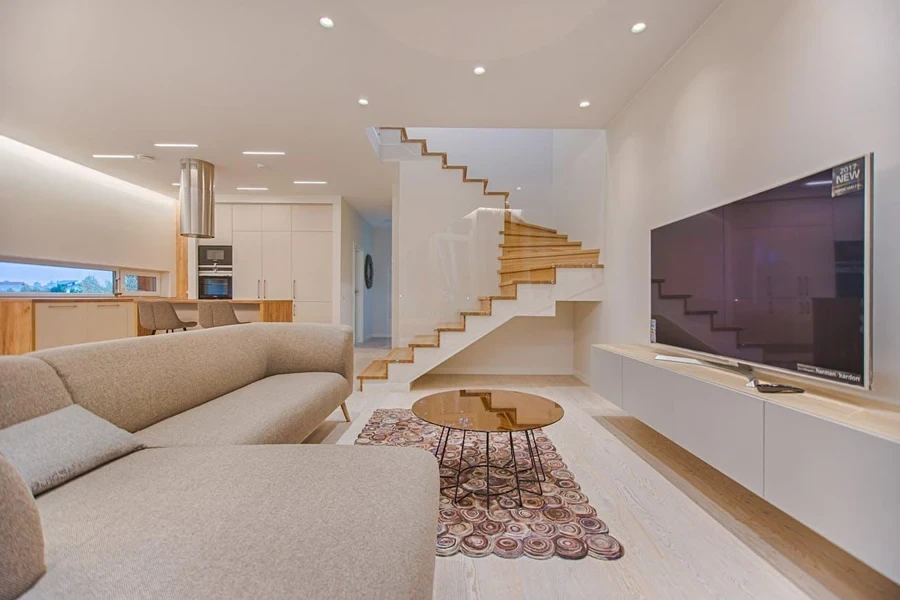
However, while projectors gain a significant advantage over TVs in terms of screen size, they fall short when it comes to operational and long-term maintenance costs. For example, projectors typically have an operational limit of around 8-12 consecutive hours, while TVs are built to function for more than 12 hours of non-stop operation, often without any issues up to 18 or even 24 hours continuously.
In addition to that, the total lifespan of both devices varies widely. TVs are generally designed to last up to an average of around 50,000 hours, while the maximum lifespan of projectors is only around 20,000 to 30,000 hours, even for the most advanced versions such as LED projectors and Laser projectors. Their light sources tend to gradually degrade in brightness and image quality.
Lastly, in terms of long-term maintenance, TVs again hold an advantage over projectors, as they typically require little to no maintenance at all. In contrast, projectors, especially traditional lamp-based ones such as older DLP or LCD projectors, require periodic bulb replacements. This is necessary because the bulbs dim over time and need replacing every few thousand hours, leading to higher maintenance costs in the long run.
Installation and usage flexibility

In the context of ease of use and versatility, true to its cost-efficiency, projectors emerge as the clear winner in this comparison. Thanks to their portability and lightweight design, projectors offer significantly more flexibility in installation and usage compared to TVs since they take up considerably less space. Projectors hence can be particularly appealing to customers who place emphasis on adaptable setups for different spaces.
In the meantime, unlike TVs, which are mostly designed for indoor use, projectors can easily transition to outdoor settings, offering a range of versatile usage options that traditional TVs cannot provide. In fact, there are plenty of outdoor projector options, including portable outdoor projectors, battery-powered outdoor projectors, waterproof projectors which are normally IP-rated projectors based on their waterproof protection level as well as some high-lumen projectors that are excellent in brightness for dark outdoor projection.
The best part is, that the usage of these outdoor projectors also means that a cozy movie night under the stars becomes totally feasible. With the larger screen size options and the natural darkness in the outdoor environment that enhances image brightness and clarity, projectors are especially well-suited for such settings.
Target market segmentation

Overall, based on the key differences discussed above, it is clear that TVs surpass projectors by far in terms of image quality, sound performance, and long-term usability with lower maintenance requirements. On the other hand, however, projectors outperform TVs in terms of price-to-screen-size ratio, as well as installation flexibility and usage versatility.
The fact that each of them excels in different perspectives presents a valuable opportunity for sellers to segment their markets accordingly. Sellers targeting durability and quality-seeking consumers can focus on TVs, which are most suited for home entertainment enthusiasts, gamers, or those who place priorities over image and sound quality in their viewing experience.
Meanwhile, projectors are more aligned with budget-conscious consumers or those seeking larger screen sizes with flexible setups, including businesses, educators, and consumers looking for home theater experiences at a lower cost-per-inch rate. So TVs can cater to the luxury, gaming, and home entertainment segments, while projectors fulfill the needs of educational institutions, corporate presentations, and outdoor cinema or large event viewers.
Projectors vs. TVs: Which is more popular?

From Google keyword search volume to preference in home theater system setups, TVs win over projectors hands down. While the keyword projectors are also pretty popular with at least 10K search volume over the past 12 months, keywords related to TVs, such as “4K TVs on sale”, have exceeded 100K searches in the same period. In the home theater market, TVs are also much more prevalent than projectors, with 86% of home theaters being TV-based and only 14% featuring a projector, according to a 2021 study by the Consumer Technology Association (CTA)®.
TVs are reportedly the preferred choice primarily due to their convenience, with an average screen size of 61 inches. Projectors, on the other hand, though less common, offer much larger displays at an average size of 103 inches, and are often part of setups that use advanced audio configurations like 5.1 or 7.1 surround sound systems. The research result demonstrates that while TVs dominate the market, projectors maintain a niche appeal, especially for consumers seeking a more immersive experience with larger screens, better flexibility in installation, and outdoor viewing options, as per the comparison result highlighted in the previous section.
Illuminating the right choice

Projectors and TVs are both electronic devices that display images or videos from various sources, whether for entertainment or presentation purposes. They also serve as integral parts of home theater systems, which are expected to grow significantly with an aggressive CAGR over the next 5 to 10 years.
The key differences between projectors and TVs that sellers should be aware of include factors such as price versus performance, image quality and resolution, target market segmentation, installation flexibility, space requirements, brightness, and sensitivity to ambient light. Additionally, long-term maintenance, operational costs, sound quality, audio options, and potential for outdoor viewing all play important roles in product choice. While TVs may appear to dominate in popularity, projectors continue to carve out a solid niche for consumers seeking a more immersive and cinematic experience.
And finally, remember to join a range of industry professionals at Cooig.com Reads to stay updated on logistics trends and wholesale sourcing ideas.
